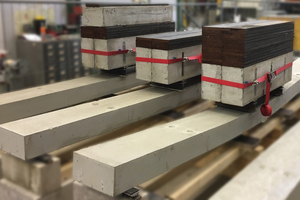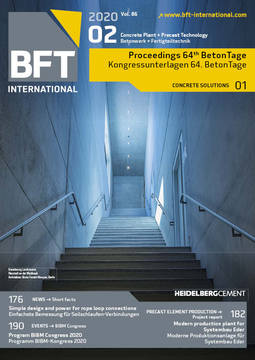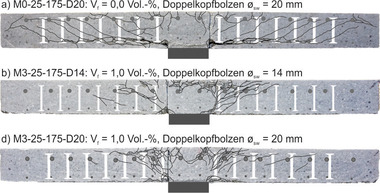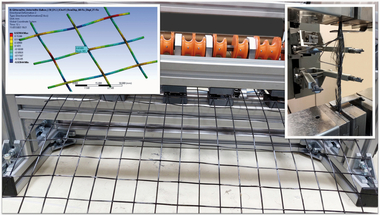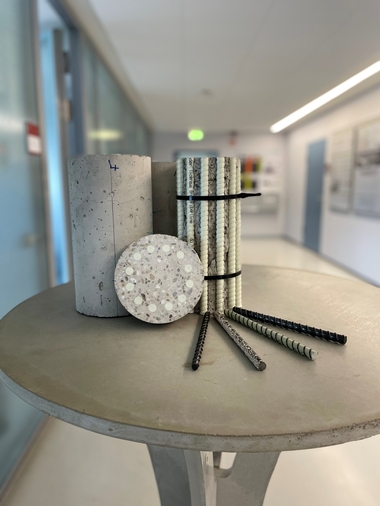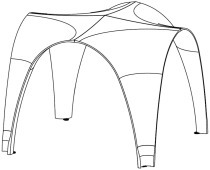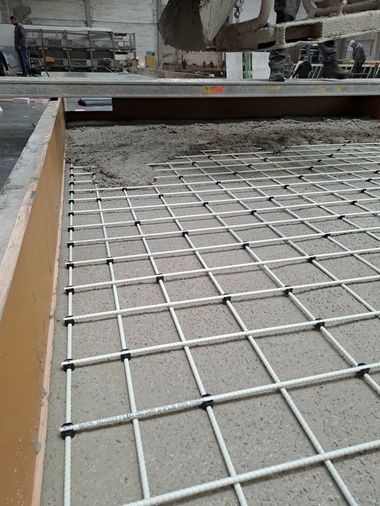Research on long-term behavior
A major part of the damages occurring at steel-reinforced concrete structures is caused by the corrosion of the steel reinforcement. Cost-intensive and time-consuming repair works or new replacement constructions are often required even before reaching the intended service life. For this reason, carbon-fiber reinforced polymers (CFRP), which are in particular characterized by their high tensile strength and their resistance to chemical and physical influences, have been a subject of research for some time now. Despite the increased use of this reinforcement and the intensive research conducted in this field, sufficient experience on the long-term behavior of highly stressed carbon-fiber reinforced concrete members is not available. Since the use of carbon fiber reinforcement is intended to extend the service life of structures, precise knowledge of the load-bearing, cracking and deformation behavior of carbon fiber reinforced concrete members under long-term loading is required.
Within a research project promoted by the German Federal Ministry of Education and Research, experimental and theoretical investigations are carried out on the load-bearing behavior of carbon-fiber reinforced concrete members. In addition to analyses of the material behavior of concrete and reinforcement, which include strength, modulus of elasticity and creep characteristics, reinforced concrete members are tested under short-term loading as well as under monotonic and cyclic long-term loading and analyzed in terms of bending and shear capacity. Both members with carbon and steel reinforcement are tested enabling a direct comparison and identification of possible differences. The findings obtained are used to check existing engineering models regarding their suitability for the prediction of the load-bearing behavior of carbon-fiber reinforced concrete members and, if required, to modify them.

